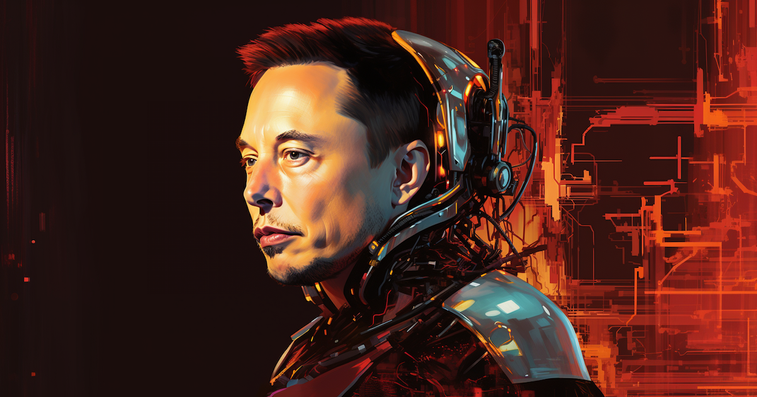
“Imagine if Stephen Hawking could communicate faster than a speed typist or auctioneer. That is the goal.” — Elon Musk
Stephen Hawking was a genius.
He was a theoretical physicist whose work on cosmology (study of the cosmos), black holes, quantum mechanics, and the general theory of relativity made him a giant in his field of study.
His predictions and theories weren’t always correct, but he was always pushing the outer limits of our understanding of the universe we find ourselves in.
It’s worth noting that Hawking firmly believed in the theory that our universe is just one of many. That some unknown number of universes actually exist.
Concepts like these are quite hard to comprehend. What are the implications? Can one travel between different universes? Are there parallel universes?
These are the types of things that Hawking thought about… from his wheelchair.
Hawking suffered from amyotrophic lateral sclerosis (ALS), which is often referred to as Lou Gehrig’s disease.
ALS is a nasty neurodegenerative disease, which paralyzed Hawking over time.
For a while, he was able to communicate with a speech generator through a handheld device. But when he lost the ability to control his hand, he was left to control a speech device using a single cheek muscle.
Naturally, this was a massive impediment for not only communicating, but for interfacing with the modern world. Everything was slow, arduous, and required the support of helpers to get anything done.
Imagine how frustrating that must have been for Hawking. He passed in 2018.
If only he had been around for Telepathy.
Telepathy is the new product name for Neuralink’s brain-computer interface (BCI).
Aside from being an outstanding product name — as opposed to some fabricated word from an acronym — it is now one of the most promising solutions for those who have quadriplegia, ALS, limb amputation, aphasia, or an inability to speak.
Telepathy is the result of several years of hard work on accelerated timelines by Elon Musk and his team at Neuralink.
Neuralink has been yet another of Musk’s ambitious endeavors where he was heavily criticized for entering into a field in which he had no background or experience.
Founded in June 2016, Neuralink was largely in stealth mode until the summer of 2019… when it raised $51 million at a $522 million valuation.
By August of 2020, Neuralink had successfully implanted its brain computer interface (BCI) device into Gertrude — the pig seen below.
The implant was capable of measuring and capturing Gertrude’s neural activity as she fed.
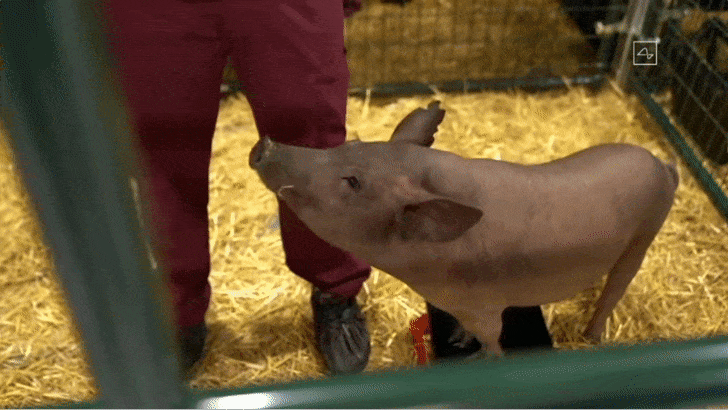
The cackles and jokes from the “experts” in the neuroscience community were very audible at that time…
“Neurologists aren’t so sure about Elon Musk’s Neuralink brain implant startup” — Fortune, August 31, 2020
“Elon Musk’s Pig-Brain Implant is Still a Long Way from ‘Solving Paralysis’” — Scientific American, September 2, 2020
“Not Impressed”— Futurism, September 4, 2020
Musk and his team were seen to be toying with pigs in a field they knew little about. Meanwhile, other academic institutions and companies had already experimented with human implants.
"I don't think there was anything revolutionary in the presentation," said Professor Andrew Jackson, Professor of Neural Interfaces at Newcastle University in the U.K., following Musk’s public announcement of Gertrude’s success.
“This is solid engineering but mediocre neuroscience.”
But by April of 2021, Neuralink had successfully implanted its BCI device into monkeys.
Seen below is a monkey playing the game of Pong using its mind… almost like telepathy — hence the name.
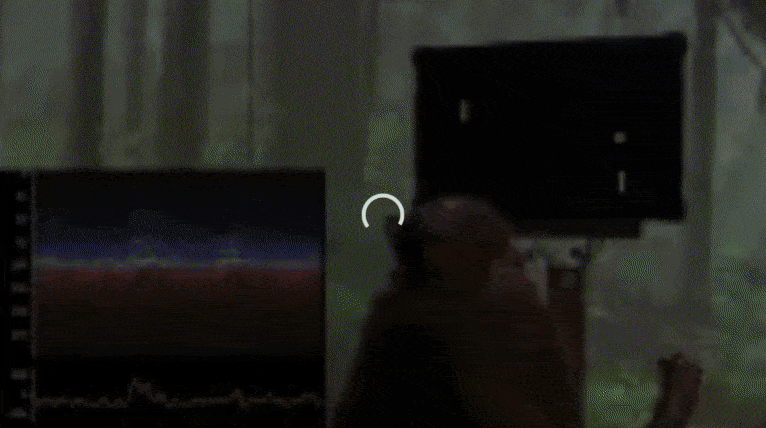
For those that haven’t seen this before, I want to be very clear: There are no wires. There is no controller. The monkey is playing the game just with its thoughts, which are measured and wirelessly transmitted to the computer.
The metal rod that the monkey is grasping is a feeding tube. The monkey is rewarded with food for controlling the gameplay.
Neuralink was able to do this by mapping out neural activity when the monkey was able to use a joystick.
Then, they removed the joystick, allowing the monkey to control the game wirelessly just by neural activity.
The development was huge, and it started to turn some heads.
The progress was enough to pull in more than $200 million in investment, increasing the valuation to more than $2 billion.
The next step was clear, to move to in-human trials.
And by May of last year, Neuralink received FDA approval for human clinical trials.
By September 2023, the company announced it was accepting patient registrations for the clinical trial.
Finally, just yesterday, Musk announced that the first human received an implant.
The patient is recovering well, and “the initial results show promising neuron spike detection.”
It’s not so funny anymore is it?
A wireless computing system in a human brain. I know it’s unnerving to many.
But before we get to that discussion, what’s important to note is that the team at Neuralink has gone from an idea on paper to an implant in a pig… to a monkey… and now to its first human implant in less than five years.
And there’s more…
The second key point for us to understand is that Neuralink has built an entire system for implanting this technology… into patients at scale.
Neuralink isn’t building the technology just for one-off, custom implants. The vision is much greater than that — more on that in a bit.
The N1 implant is small and positioned as “cosmetically invisible.”
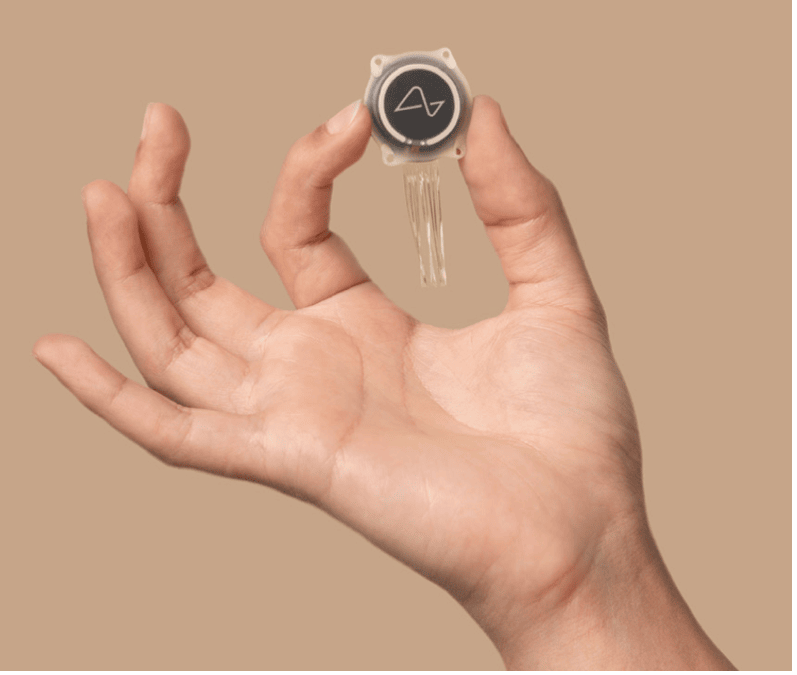
It is comprised of 1024 electrodes that are distributed across 64 threads, each thinner than a human hair.
And Neuralink developed a surgical robot — the R1 Robot — to refine the process of implanting those threads into the correct place in the human brain.
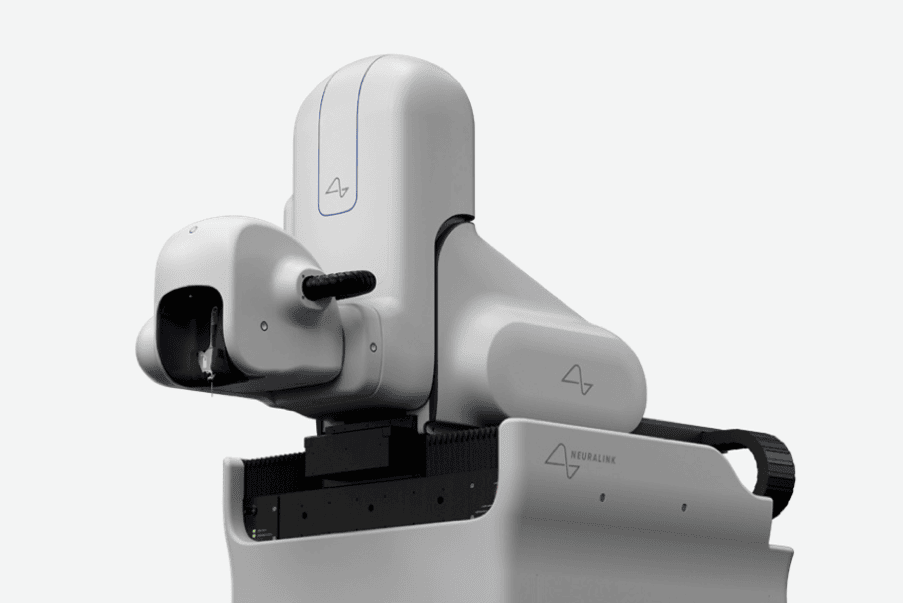
The precision of the R1 Robot is incredible.
The needle on the R1 is thinner than a human hair and is capable of grasping each of the 64 threads and inserting them into a human brain.
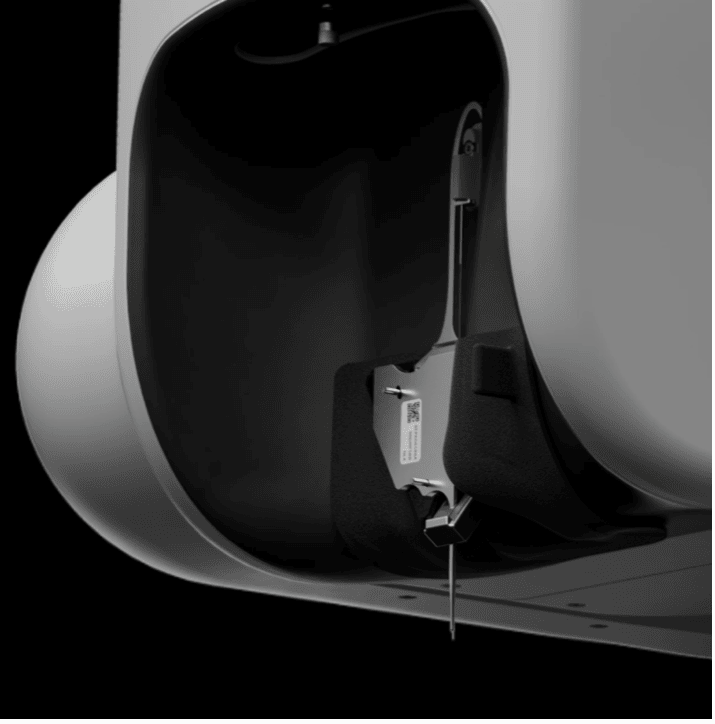
Once the N1 has been implanted, it’s calibrated using software that prompts the patient to perform a series of tasks.
I’ve picked out a short clip as an example below.

The goal is to be able to control any computing device just by thinking.
That means a laptop, a smartphone, a desktop computer, a media system, or even an industrial control system or a car.
I hope by now we’ve all taken the leap and grokked the implications of this…
Yes, it’s true that the short-term goal of Neuralink is to empower those with severe disabilities to control computing systems which will radically improve their lives.
This is precisely why Neuralink was able to get FDA support for clinical trials.
But the vision, the really big picture, is something so much greater.
This technology can obviously be used to augment all humans.
It is the ultimate brain computer interface (BCI).
Rather than typing into a laptop or using a smartphone…
Rather than strapping on an Apple Vision Pro, which can take visual commands, understand hand gestures, or verbal commands…
All we will need to do is think.
Just think, and we will be able to control a computing system.
I can just hear the decels shrieking right now. It must be painful for them.
But Neuralink has built a robotic system and BCI capable of being deployed at scale.
I know this might feel deeply uncomfortable to many of us.
After all, if we’re “just fine” with our smartphones and our laptops, no need to have 64 threads inserted into our brain.
It’s natural for us to think that way.
But in time, as the technology develops and the sheer utility of Neuralink is recognized, many will choose to have the implants.
It will start with those that need the technology… and migrate to those that want the technology.
Over the next few years, the implant will shrink further in size to the point that it won’t even be recognizable — a fraction of the size of the picture I showed above.
And Telepathy will enable a true mind meld between our human brains and computing systems.
Let’s celebrate this remarkable accomplishment by the team at Neuralink.
I’m excited to hear about the results of the first implant, and many more to follow.
The clinical trial is scheduled to run for 6 years.
If anyone would like to learn more about the clinical trial, you can find more information here.
And for any of us that have friends or family that might be in need of this technology, the Neuralink patient registry can be found here.
As for Neuralink, some very smart money believes this is a massive business in the making.
Last June, shares of Neuralink traded in a secondary transaction at a $5 billion valuation.
A successful clinical trial report will certainly excite more investors at even higher valuations.
Already backing Musk and his team at Neuralink are Alphabet, Google Ventures, Sam Altman (CEO of OpenAI), Craft Ventures, Draper Fisher Jurvetson (DFJ), Founders Fund (Peter Thiel), and many others.
Telepathy is the answer to “what comes next” when we think about computer interfaces.
And the way we can think about the timelines is to recognize the extraordinary progress that Neuralink made in less than five years.
Then we remind ourselves that the pace of technological development is accelerating with each week that passes…
Just imagine what this technology will look like within the next 5 years.

What do you think of this issue of Outer Limits? As always, we welcome your feedback and questions, and look forward to them. We read each and every email and address common questions in the Friday AMA issues. Please write to us by clicking here.